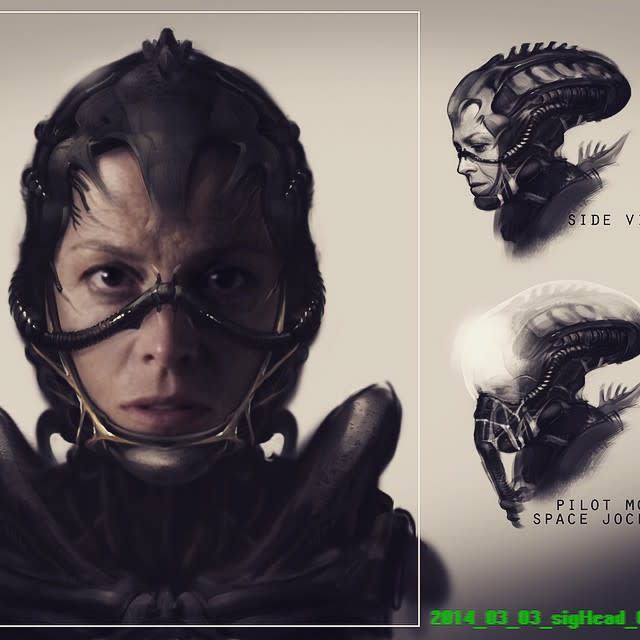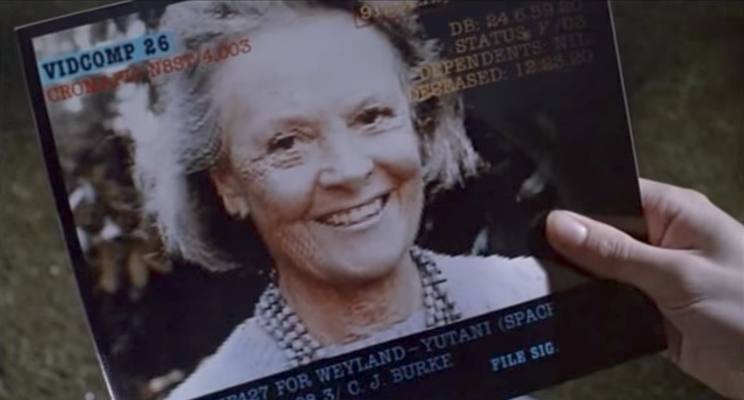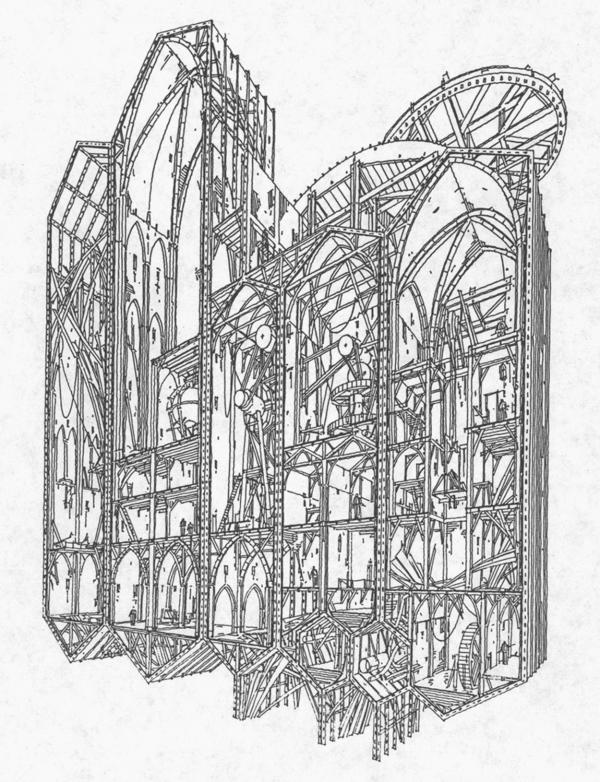The 'Alien' Movies That Never Were: Your Ultimate Guide

Alien: Covenant is the eighth film to feature the legendary extraterrestrial monsters first created by H.R. Giger for Ridley Scott’s 1979 Alien, and along the way the series has seen more than its fair share of unlikely twists and turns. Whether it was transitioning from horror to more action-oriented terror with James Cameron’s Aliens or killing off its heroine Ripley (Sigourney Weaver) in Alien 3 or shifting into cloning territory with Alien: Resurrection or the all-out battle of Alien vs. Predator, the franchise has mutated in many novel ways over the past four decades.
And yet the Xenomorphs’ cinematic saga might have played out very differently, given the numerous storylines and alternate versions that were considered but never produced (or at least completed in a satisfactory way). On the eve of Scott’s latest trip to the cold, dark reaches of space, we take a look back at the various aborted Alien movies that might have been.
Alien (1979)
Alien was the brainchild of screenwriter Dan O’Bannon, who teamed with Ronald Shusett on a story that boasted a basic plot outline — space travelers investigate a distress signal on a remote planet and wind up in a face-hugging alien nightmare — that would remain intact throughout. However, there were some noticeable differences in O’Bannon and Shusett’s original treatment. For one, the astronauts, upon arriving on the mysterious planet, would find not only a crashed spaceship (with the “Space Jockey” astronaut instead) but also an ancient pyramid built by a long-gone race. Inside that towering structure, they’d discover the alien’s eggs, as well as indications that this extinct culture revolved around their difficult sexual-reproduction process.

After O’Bannon and Shusett signed a deal with production company Brandywine, producers David Giler and Walter Hill extensively rewrote the script, with the most notable additions proving to be making Ripley a woman and the inclusion of Ash (Ian Holm), the crew member who, it’s ultimately revealed, is actually an android with other allegiances. Moreover, while Scott considers his theatrical cut to be definitive, he nonetheless agreed — after being told that a new version would be fashioned, with or without his participation — to re-edit the movie with a new scene of Ripley finding Tom Skerritt’s cocooned captain Dallas for the 2003 “Director’s Cut.”
Aliens (1986)
After dealing with a variety of studio and lawsuit-related issues, Giler and Hill began work on a sequel in 1983, at which point James Cameron was approached to spearhead development. The result was a Vietnam-inspired tale that sent Ripley back to the alien planet LV-426 alongside Colonial Marines, and that plumbed all sorts of maternal-instinct dynamics. An expanded “special edition” (which many believe is the film’s definitive version) reinstates a number of sequences, most notably one in which Ripley learns that, while she’s been floating around the galaxy in hyper-sleep, her young daughter has grown old and died.

Alien 3 (1992)
For the third entry in the series, several ideas were bandied about. From the outset, Giler and Hill wanted to focus more on the Weyland-Yutani corporation’s nefarious desire to use the aliens as weapons. There was an initial thought that the action would shift to Earth, but the first real iteration of the script — based on Giler and Hill’s treatment, and penned by famed cyberpunk author William Gibson (Neuromancer) — remained in the cosmos, and focused on Michael Biehn’s Colonel Hicks rather than Ripley (who was in a coma after a fire aboard their ship). Landing on a capitalist mall-world, Hicks would investigate Weyland-Yutani’s scheme to create a race of alien warriors — as well as the similar plans of a Marxist outfit known as the Union of Progressive Peoples. Much biomechanical class warfare would ensue, ultimately resulting in a cliffhanger that would set up a fourth and final installment in which all of humanity would unite (with Ripley back in action) against an army of alien adversaries.
Displeased with this script, Giler and Hill turned to director Renny Harlin and, on his recommendation, screenwriter Eric Red. That duo’s various concepts, based in part on Gibson’s script, went nowhere fast, and the producers next turned to David Twohy (Pitch Black), who set his proceedings on a prison planet where military experiments were being conducted on the aliens. Harlin, however, had no love for this route, and departed the project shortly thereafter.

The producers then hired director Vincent Ward, who came up with a truly original take: have Ripley land on a Hieronymus Bosch-esque planet made wholly out of wood, and populated by austere monks who didn’t appreciate her presence on their distant outpost. The ensuing script, penned by John Fasano, however, also didn’t pass muster with the powers that be. Thus, Giler and Hill took their own pass on the material, blending together Twohy’s and Ward/Fasano’s ideas into a “final” version, in which Ripley crash-lands on an all-male penal colony.
David Fincher was subsequently hired to replace Ward, but shooting without a completed script — and with constant interference from producers and the studio — Alien 3 proved to be a hodgepodge effort at best. Using deleted scenes and alternate takes, an “Assembly Cut” was constructed for home video that sought to more accurately reflect Fincher’s original vision. No matter its improvements, however, this restored version still feels somewhat incomplete.
Alien: Resurrection (1997)
Joss Whedon was enlisted to write the script for Jean-Pierre Jeunet’s Alien: Resurrection. But what he wrote didn’t, according to him, make it onto the screen. Originally, Whedon was tasked with penning a story that would focus on a genetically modified teenage Newt, as he told In Focus magazine:
“The history of Alien: Resurrection is fairly twisted also because I wrote a 30-page treatment for a different movie. They wanted to do a movie with a clone of Newt [the little girl from Aliens] as their heroine. Because I’d done some action movies and I’d done Buffy, they said, ‘Well, he can write teenage girls and he can write action, so lets give him a shot.’ The franchise was pretty much dead, and I wrote the treatment and they said, ‘This is really exciting. We want to get back in this business. But we want Ripley. So throw this out.’ That one was probably my favorite; I think it was a better-structured story than the one I ultimately wrote.”
Even once the focus of Whedon’s script shifted back to a Ripley clone, the ending proved to be a constant source of contention. Whedon said there were five total. “The first one was in the forest with the flying threshing machine. The second one was in a futuristic junkyard. The third one was in a maternity ward.
“And the fourth one was in the desert. Now at this point, this had become about money, and I said, ‘You know, the desert looks like Mars. That’s not Earth; that’s not going to give people that juice.’ But I still wrote them the best ending I could that took place in the desert. And then finally they said, ‘You know, we just don’t think we need to go to Earth.’ So I just gave them dialogue and stuff, but I don’t remember writing, ‘A withered, granny-lookin Pumkinhead-kinda-thing makes out with Ripley.’ Pretty sure that stage direction never existed in any of my drafts.”
Alien vs. Predator films
Thanks to both the Dark Horse Comics series, as well as the ending of Predator 2 (in which an alien skull is seen in a Predator’s trophy room), the mashup concept gained steam in the late 1990s — thereby negating Scott and Cameron’s budding plans for a fifth proper entry in the franchise. By 2002, a basic idea had been fashioned in which humans would try to breed aliens from the eggs they find in a crashed Predator spaceship — all as a means of luring more Predators to Earth, so they could steal their futuristic technology.
Paul W.S. Anderson was brought aboard to helm the project, and he quickly reworked the entire storyline, instead focusing on the ancient historical relationship between the two beasts, with the Predators having built Earth’s pyramids as training facilities where their young warriors would battle Xenomorphs.
After their 2007 sequel, Aliens vs. Predator: Requiem, the Brothers Strause revealed to io9 that they had plans for a third entry in the spinoff series, which would have led directly into Alien:
“The original ending for AvPR, that we pitched them, ended up on the alien homeward, and actually going from the Predator gun, that you see at the end, it was going to transition from that gun to a logo of a Weyland-Yutani spaceship that was heading to an alien planet.
“And then we were actually going to cut down to the surface [of the alien planet] and you were going to see a hunt going on. It was going to be a whole tribe of Predators going against this creature that we called King Alien. It’s this huge giant winged alien thing. And that was going to be the lead-in, to show that the fact that the Predator gun [at the end of AvPR] is the impetus of all the technological advancements that allowed humans to travel in space. Which leads up to the Alien timeline.”
Alien 5: The Neill Blomkamp alternate-timeline sequel
In 2015 — three years after Ridley Scott’s first prequel, Prometheus — director Neill Blomkamp (District 9) debuted concept art for a sequel that would pick up where 1986’s Aliens ended and follow the further adventures of Ripley, Hicks, and Newt. This proposed idea would have, in effect, ignored Alien 3, Alien: Resurrection, and the Alien-Predator films, creating an alternate timeline in which the protagonists — who all met their maker in Alien 3 — lived to fight another day against the Xenomorphs.
#alien going very well. Love this project
A post shared by Nb (@neillblomkamp) on Jul 16, 2015 at 12:07pm PDT
While some of that artwork was striking (a scarred Hicks; Ripley in alien-style disguise), and Weaver was onboard with it, Scott’s ongoing Alien prequel plans took precedence at Fox. For now, at least, Blomkamp’s retconning film is, like its heroine, still dead.
Speaking of deaths, watch the five best kills in the Alien saga:
Read more from Yahoo Movies:

 Yahoo Movies
Yahoo Movies 